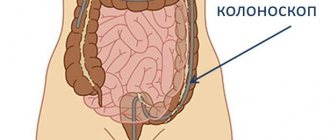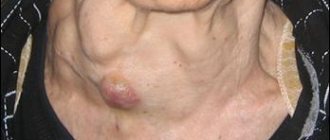What is Bartholinitis Bartholin glands
The content of the article
Bartholinitis is an acute or chronic inflammation of the Bartholin glands.
The Bartholin gland (large vestibular gland) secretes a thick, viscous secretion that moisturizes the mucous membranes of the vagina and acts as a natural lubricant during sexual intercourse. The ducts through which fluid flows are located inside the labia minora. Bartholin's glands are only about 2 cm in size.
Microorganisms enter the gland tissue from the urethra, genital tract, through the blood or lymph flow. Inflammation leads to blockage and accumulation of fluid inside. Treatment of bartholinitis requires the mandatory intervention of specialists. But first of all, it is necessary to determine the cause of the inflammation, otherwise, without proper treatment, suppuration will begin.
Be careful - strangers are in the body!
Inflammation of the female genital organs is quite easy to suspect. Sudden pain in the lower abdomen, menstrual cycle disorder, itching and strange (in color and smell) vaginal discharge - all this indicates the presence of inflammation. If, in addition, the temperature rises and weakness appears, most likely the inflammatory process is in the acute phase. Pathogenic microorganisms can enter the female genital organs in two ways: through the blood and through the vagina, and the latter route is much shorter than the first. After all, the internal genital organs of a woman are an open system by nature; it communicates with the environment through the vagina and cervix. An inflammatory disease can be caused by sex without a condom, trauma to the genital organs of any origin, failure to comply with personal hygiene rules, abortion and childbirth. When the infection circulates in the blood, for example, with influenza and scarlet fever, it can also reach the female genital organs. A similar situation is observed when somewhere in the body there is already a focus of inflammation: caries, chronic sinusitis, tonsillitis, etc. A dormant infection can “wake up” at any moment, “swim” through the bloodstream to the genitals and “arrange” inflammation. It is impossible to talk about all inflammatory diseases of the female genital organs in one article; we will focus on one of them - bartholinitis.
Common causes of bartholinitis
Inflammation of the Bartholin glands and their ducts is caused by:
- Infection with streptococci, staphylococci and other pathogenic microbes - they can enter the genitals not only through sexual contact, but also when the infection spreads from other organs or due to poor personal hygiene.
- Protozoal and fungal infections, sexually transmitted - trichomoniasis, chlamydia, candidiasis (thrush).
- Hypothermia, decreased immunity.
- Wearing synthetic underwear in hot weather.
- Microtraumas caused by sexual intercourse with insufficient vaginal hydration.
- Traumatic medical procedures.
As a result of inflammation, the outflow of secretions becomes difficult. Its accumulation leads to the formation of a false abscess. If the disease is not treated, suppuration will begin (a real abscess).
Complications
In the absence of timely measures to eliminate the inflammatory process, negative manifestations are noted. One of them is considered to be a cyst. It forms when the disease enters the chronic stage. Fistula is another unpleasant consequence of the pathology. It is the result of the outflow of purulent masses from the source of inflammation. The disease is difficult to treat conservatively. Most often it is removed surgically. Other possible consequences of bartholinitis include:
- adnexitis;
- vulvitis;
- cystitis;
- colpitis
Symptoms of bartholinitis
There are several forms of the disease:
- Acute
, in which inflammation, swelling and redness are pronounced at the location of the excretory duct of the gland. Inflammation is accompanied by fever and pain that increases with movement. When examining the labia, a tumor the size of a bean (or smaller) is felt. Without treatment, the inguinal lymph nodes may become inflamed - in this case, a new disease will appear - lymphadenitis. - Subacute
, in this case the symptoms are mild. Slight pain is observed only during movement and sexual intercourse. The temperature is not elevated, there is no pronounced edema. This form of bartholinitis can become acute or go away on its own. - Recurrent
when the disease recurs. Hypothermia and wearing tight synthetic underwear contribute to the return of the disease. - Chronic,
characterized by the constant presence of inflammation and swelling. The temperature is kept within 37.1-37.5 degrees, no acute pain is noted. Chronic bartholinitis is very dangerous - it can lead to vaginal cysts.
Acute bartholinitis
The disease begins with the formation of a false abscess - a swelling in the area of the labia minora caused by accumulated fluid. A woman complains of pain in the groin area and increased temperature. As the disease progresses, a purulent (true) abscess occurs. A woman complains of severe pain in the labia area, swelling and enlargement of the inguinal lymph nodes. The temperature rises to 39-40 degrees. An abscess can be felt inside the gland.
When an abscess is opened independently, the contents leak out and the woman’s health temporarily improves, but then the hole closes and inflammation resumes. Sometimes the abscess breaks not outward, but inward. This often occurs when a woman tries to squeeze out an abscess on her own. Extensive suppuration of the surrounding tissues forms, which can lead to sepsis (blood poisoning).
The disease is provoked by:
- Failure to comply with hygiene rules. Wearing tight synthetic underwear in hot weather, which interferes with the natural ventilation of the skin. Dense tissues cause stagnation in the gland and interfere with the outflow of lubricant.
- STIs (gonorrhea, chlamydia, ureaplasmosis) and other genital infections.
- Diseases of the mucous membrane, accompanied by itching and scratching (leukoplakia, kraurosis). Through superficial damage, microbes from the vagina and urinary tract easily enter the gland.
- Gynecological operations and abortions performed with violation of sterility during the intervention or in the postoperative period.
- Hypothermia.
- Decreased immunity and vitamin deficiencies. A weakened body is less resistant to infections and microbes begin to multiply rapidly.
- Thrush, causing disturbances in the flora and dysbacteriosis of the vagina.
- Chronic infections in the body outside the genital tract. Microbes from there can enter the Bartholin gland with blood and lymph.
Chronic bartholinitis
The untreated acute form of the disease becomes chronic. Mild inflammation of the gland occurs with constant exacerbations after menstruation, hypothermia, during heat. In the chronic course of the disease, there is constant swelling in the labia area and the formation of a cyst filled with liquid contents. The formation periodically breaks through with the release of pus. A woman complains of a dull pain in the labia area that gets worse when sitting and walking. Sometimes discomfort occurs during sexual intercourse. When pregnancy occurs, the symptoms of the disease intensify and an exacerbation occurs.
Is it necessary to treat bartholinitis?
Bartholinitis always occurs as a reaction to the presence of an infectious pathogen in the gland duct, which means that without treatment one can expect not only severe inflammation that will last for an unknown amount of time, but also the formation of an abscess.
Most often, patients who are faced with such a problem and, having read advice from the Internet, do not consult a doctor for a long time, waiting for the disease to resolve itself. And after some time, the symptoms actually become less pronounced and acute - this occurs as a result of the fact that the abscess opens on its own, removing the pus.
If you are ready to wait for the suppuration to burst, endure swelling and pain, then, of course, you don’t have to go to the gynecologist. But keep in mind that the danger of such an outcome is that the opening does not always occur externally - the infection can spread internally. And then you will also have to treat the consequences of bartholinitis.
Diagnostics
Photo: moirebenok.ua
Diagnosis begins with the collection of characteristic complaints indicating the possibility of bartholinitis. Next, the doctor proceeds with a gynecological examination, during which hyperemia (redness) of the labia minora is detected. Upon palpation, a node is detected, upon pressing on which exudate of a serous or purulent nature is released. Also, these actions may be accompanied by the appearance or intensification of pain.
To identify the causative agent of the disease, microscopy and bacterial culture of the resulting exudate are performed. Bacterial culture allows not only to identify the microorganism that caused the development of bartholinitis, but also to establish its resistance to antibacterial agents. As a rule, the culture results become known after 5–7 days from the start of the study of the material. Therefore, if necessary, PCR is performed - diagnostics, which allows one to quickly identify the causative agent of the disease. The action of PCR (polymerase chain reaction) is to identify the genetic material of an infectious pathogen. This diagnostic method is highly specific, since it is it that allows one to determine the unique sequence of nucleotides characteristic of a particular pathogen. In addition, PCR allows you to simultaneously detect several pathogens without casting doubt on the results of the study.
When making a diagnosis, it is important to first make a differential diagnosis with the following diseases:
- boil of the labia;
- inflammation of the peri-vaginal tissue;
- atypical form of syphilitic chancre;
- Bartholin gland cancer.
Is it possible to cure inflammation of the Bartholin gland on your own?
Bartholinitis can be caused by completely different pathogens, occur with different severity and in different forms. In addition, each patient may have associated problems that require additional treatment. For example, bartholinitis is often accompanied by reduced immunity, thrush; during an examination, a gynecologist may detect genital herpes or another disease.
After making a final diagnosis, only a doctor can prescribe treatment that will be aimed at eliminating exactly those infections and problems that are detected.
Treatment of bartholinitis
Antibiotics are prescribed to treat bartholinitis, but there are no universal tablets that act immediately against gonorrhea, chlamydia, streptococcus, staphylococcus, herpes, etc.! Each pathogen requires its own medicine, so “standard regimens from the Internet” do not work.
Treatment measures depend on the form of the disease:
- Acute bartholinitis
. The doctor prescribes antibiotics and painkillers. The resulting abscess is opened and a duct is formed through which purulent fluid will drain. This operation is called marsupialization. - Subacute bartholinitis
can be treated without the intervention of a surgeon, which is why it is so important to consult a gynecologist in a timely manner. The doctor will find out the cause of the disease and prescribe antimicrobial or antiprotozoal medications; warm baths with herbs, physiotherapy, etc. will complement the treatment. - Treatment of recurrent and chronic bartholinitis is complex
. Existing cysts and ulcers are removed. The woman is prescribed antibiotics, sulfonamides, drugs that enhance immunity, and vitamins. Ultrasound treatment and magnetic therapy are recommended. In severe cases and in the presence of frequent relapses, extirpation (removal) of the Bartholin gland is performed.
To resolve the swelling, warm sitz baths with a slightly pink solution of potassium permanganate and physiotherapeutic procedures are used. Painkillers and antipruritics, vitamins, and immune stimulants are prescribed.
Features of the treatment of bartholinitis
In the treatment regimen for bartholinitis, local therapy plays an important role - ice compresses, salt lotions, absorbable ointments and gels. These treatment methods provide maximum relief for a sick woman’s condition and have a symptomatic effect, relieving pain, relieving swelling and irritation. Related methods are also prescribed individually.
If the patient’s condition is accompanied by very high body temperature, chills, and severe pain, the gynecologist will prescribe additional medications that reduce fever and pain, including injections.
Other methods
Treatment involves douching, the use of ointments and suppositories:
- Douching with acidophilus helps alleviate the condition. It is recommended to alternate this remedy with solutions of potassium permanganate and Chlorhexidine.
- Levomekol ointment, which combines healing and antimicrobial components, has a good therapeutic effect. It is able to stop the inflammatory process.
- If bartholinitis is aggravated by the development of a purulent abscess, it is recommended to use Vishnevsky ointment.
- A less “fragrant” analogue of this remedy is Ichthyol ointment.
To restore the vaginal microflora, vaginal suppositories Acylact, Lactonorm and others are used.
Is surgery always necessary?
Surgical treatment of this disease may be required in cases of manifestations of an abscess (purulent process) of the Bartholin gland. In this case, the operation consists of opening the purulent focus, removing all the contents and placing a special drainage tube for 5-6 days. During this time, the remaining purulent particles are removed from the gland cavity.
At the same time, the operation does not cancel the classical therapeutic regimen described above - antibiotic therapy, local techniques, strengthening the immune system, which means that you will have to take the pills anyway.
You can refuse the operation, but this is not recommended, since the abscess will still open on its own. In this case, everything will be much more painful, the infection can get into the vagina and spread to the internal genital organs, and everything will take a very long time to heal.
In severe cases, the gland must be removed.
What does “it” hide?
Inflammation is our body’s “response” to the invasion of foreign microorganisms or a “signal” of cell damage. Many of us know that the inflamed area hurts, swells, turns red, but few people know why this happens. In reality, a complex cascade of reactions is triggered in response to injury, and our blood vessels and protective cells play a key role in the inflammatory response. The inflammatory process can affect any organ: eyes, ears, liver, joints, stomach, and so on. And so, in order not to be confused in terms, it was decided to add the ending “-itis” to the Latin name of the diseased organ (or its part), which means its inflammation. For example, inflammation of the skin is “dermatitis”, inflammation of the ears is “otitis media”, and with an inflammatory process in the bronchi, the doctor diagnoses “bronchitis”. Perhaps, in gynecology, inflammatory processes occur most often, and they can affect both the external and internal genital organs. Such diseases include: vulvitis, vaginitis, adnexitis, endometritis, bartholinitis. Inflammation can be acute or chronic. The first occurs quickly and violently: with pain, a rise in temperature and a general reaction of the body. The second lasts long and tediously: exacerbations alternate with temporary improvements. If acute inflammation is not treated, over time it will become chronic.
What to do if bartholinitis worsens?
If the disease recurs, it is necessary to determine the cause of the relapse: perhaps the pathogen remains in the body. In this case, treatment will be aimed at eliminating the infection and strengthening the immune system.
As for frequently recurring periods of exacerbation, surgical intervention may be necessary for effective treatment, and chronic bartholinitis requires an operation different from that performed in the acute form.
In the chronic form of bartholinitis, simply removing the contents of the abscess is ineffective, since the tissues quickly stick together, again blocking the gland duct. To solve this problem, surgeons have developed two methods of performing surgery for chronic bartholinitis:
- The first surgical technique was called marsupialization and represents the formation of a new drainage canal of the gland, which does not undergo adhesion and removes the secretions and contents of the vaginal vestibule without causing suppuration. It is possible to achieve the formation of such a channel through an incision in the suppurated cavity, followed by washing it and installing a catheter, which is left for 4-5 weeks. During this time, a stable duct is formed for the discharge of glandular secretions, which reduces the risk of exacerbation by almost 90%.
- The second surgical technique is aimed at completely removing the Bartholin gland. It is only used in cases of multiple failed attempts at marsupialization. Unfortunately, the absence of the Bartholin gland leads to excessive dryness and irritability of the tissues and mucous membranes of the vagina, so patients have to use special moisturizers - these are prescribed by the doctor.
imisiky
Marusya P, well, Vishnevsky Ointment is a well-known remedy for bartholinitis, but I can swear to you that it doesn’t always help. It’s a pity that the doctor who said that they don’t operate on this nasty thing didn’t tell me what to do in case of an acute attack to avoid surgery. My story with this disease began five years ago. I caught a cold in the winter and until spring I didn’t understand why it hurt on one side during sex. The swelling appeared and then subsided. Then, during an examination by a doctor, I heard BARTHOLINITIS for the first time. Even then they found an infection in me, and after treating the infection with Trichopolum, the bartholinitis went away (they also told me that there was a cyst there, i.e. there was no inflammation, but “in a cold state,” and they prescribed suppositories for the cyst). Until next winter. Under the chafé I ran out into the cold to watch the fireworks in a thin dress and an unbuttoned coat. The kick-ass arrived in 2 days(((I spent the New Year holidays jumping on one leg (the tumor prevented me from stepping on both), stinking the whole house with V. ointment and howling in pain at night. I hardly slept. I probably didn’t take antibiotics then , I don’t remember. I tried to stick those suppositories (for a cyst). Long story short, on Christmas morning with a temperature of about 40, I myself surrendered to the hospital, where they opened this crap under general anesthesia (injected into a vein). They did everything in 15 minutes. A small incision , washed it, took the contents for culture, sewed up the incision a little on one side, but left a small hole where they put a drain so that it could be washed. I remember waking up in a chair, it hurt, but not so much. Such relief and happiness! They took me to the bed and I passed out. I didn’t care about the hot water bottle with ice. I hadn’t slept normally for several nights before, and then there was anesthesia. The next day in the morning the wound was washed (in my opinion with a silver solution), one might say they burned it, because it was painful. But then It was healing well. That time I left the hospital on the second day. She ran away. I didn’t need a sick leave, and I figured out how to treat the wound at home myself. I took out the drainage and washed it with a solution of manganese or furatsilin. I took the antibiotics Trichopolum (prescribed at the hospital) and Tsiprolet (given at the pharmacy). Apparently they burned it well. It healed in a few days. At home I was in pastel mode, of course, so as not to disturb the wound. A week after the operation I was already completely healthy)))) And a year and 4 months later everything happened again. At work, the heating was turned off and a tumor appeared on the same side, suddenly, in one day. I went to the residential complex, and they immediately gave me a referral to the hospital, because... there was already an abscess. And when a lot of pus has already accumulated there, in the capsule of the gland, it won’t go anywhere, won’t resolve, no need to open it up. I was no longer afraid. Everything went the same way. But this time there was no silver solution, they didn’t cauterize it. And I lay there for a week, from Tuesday to Monday. They forgot to treat me and didn’t install drainage. The incision was small and healed immediately. They injected me with something 2 times a day, I don’t remember what. Apparently some kind of bullshit... Less than a week has passed since discharge, and there is an abscess in the same place. It broke through on its own where the cut was. I again washed it with manganese and furatsilin (from a syringe without a needle directly into the wound) and took antibiotics. After that they didn’t cut me or break through anymore. There were several times minor inflammations without suppuration. She was treated with medication. Here are my methods: 1. Vishnevsky ointment - apply the compress correctly! Not only on the external tubercle, but so that it hits the place where the gland duct exits. Look on the Internet for pictures 2. Baths with chamomile and herbal infusions. There are recipes on the internet. It is also possible with a manganese solution. 3. Ask the pharmacy for a broad-spectrum antibiotic. At different times I was prescribed Trichopolum, Biseptol, Tsiprolet, Nolitsin. Diclofenac injections. 4. For immunity and more. A good thing. Polyoxidonium candles. It seems to me that it was they who helped avoid surgery the last time. You can inject polyoxidonium, but I did it like suppositories in [email protected] #$%&, and not deeply, so that it is closer to the gland duct and inflammation. 5. I also need Vit. E was prescribed. )))))) Poultice for the dead))))) 6. Instead of ointment V., a girl with PD advised me the following compresses: “Take 1 cube of dimexide (dilute in a 5 cc syringe) + novocaine or lidocaine, or just boiled water (4 cube) + any powder antibiotic (1 bottle), you can use ampicillin 500 mg or whatever you have. I mixed everything in a syringe, and then like a compress. I poured it on gauze, put cotton wool on top and insulated it. Do not put the oilcloth down. As soon as the compress has dried, again I added it from a syringe. For 3-4 it will go away. It’s good to do it at night.” (she’s a nurse, she knows what she’s writing. I hope she won’t be offended that I’m divulging her recipe here, but as an external remedy it’s better than V.’s ointment and doesn’t stink. She PMed me this recipe) And one more thing. If there is swelling, but it is painless and does not go away for a long time, then it is most likely a Bartholin gland cyst. You can simply remove it once and there will never be any problems again. Or you can treat it just like a cyst (for example, with Longidase), but this will not protect against relapses in the future. There is also such a method of treatment, also when the disease is in a cold state, as the formation of a new gland duct. But this is not done everywhere.
Prevention
To prevent bartholinitis you need:
- Get tested regularly for STDs and, if infections are detected, treat them immediately;
- Avoid wearing thick synthetic underwear, especially in hot weather;
- Avoid hypothermia of the lower half of the body;
- Do not use aggressive soaps or antibacterial agents (unless prescribed by a doctor). These drugs disrupt the natural balance of microflora, contributing to the occurrence of dysbiosis (development of pathogenic flora) and candidiasis - a fungal infection;
- Use pH-neutral intimate hygiene products.
Bartholinitis is easy to prevent; if you follow preventive measures, the risk of the disease is greatly reduced.
How to avoid recurrence
To prevent the Bartholin gland from becoming inflamed again, we recommend:
- visit a gynecologist regularly;
- observe the rules of hygiene;
- avoid wearing tight underwear and uncomfortable clothing that puts pressure on the genitals;
- use barrier contraception (condoms).
Regular observation by a gynecologist will allow you to avoid health problems. If they occur, the French Clinic medical center will provide you with complete, modern and comfortable treatment.
Where to cure inflammation of the Bartholin glands in St. Petersburg
Every woman faced with such a serious condition needs to promptly contact an experienced gynecologist. Such doctors work in St. Petersburg at the Diana Medical Center. Specialists use only proven effective treatment methods, so you will get rid of an unpleasant disease without complications. An appointment with a gynecologist costs 1000 rubles.
If you find an error, please select a piece of text and press Ctrl+Enter
Treatment of other diseases starting with the letter - b
| Treatment of Graves' disease |
| Treatment of bacterial vaginosis |
| Treatment of balanoposthitis |
| Treatment of rabies |
| Treatment of biliary cirrhosis |
| Treatment of amyotrophic lateral sclerosis |
| Treatment of Alzheimer's disease |
| Treatment of ankylosing spondylitis |
| Treatment of Wilson-Konovalov disease |
| Treatment of Koenig's disease of the knee joint |
| Treatment of Crohn's disease |
| Lyme disease treatment |
| Treatment of Parkinson's disease |
| Treatment of Peyronie's disease |
| Treatment of Fabry disease |
| Treatment of warts |
| Treatment of botulism |
| Treatment of bronchial asthma |
| Treatment of bronchitis |
| Treatment of bronchiectasis |
| Treatment of brucellosis |
| Treatment of typhoid fever |
| Treatment of knee bursitis |
The information is for educational purposes only. Do not self-medicate; For all questions regarding the definition of the disease and methods of its treatment, consult your doctor. EUROLAB is not responsible for the consequences caused by the use of information posted on the portal.











